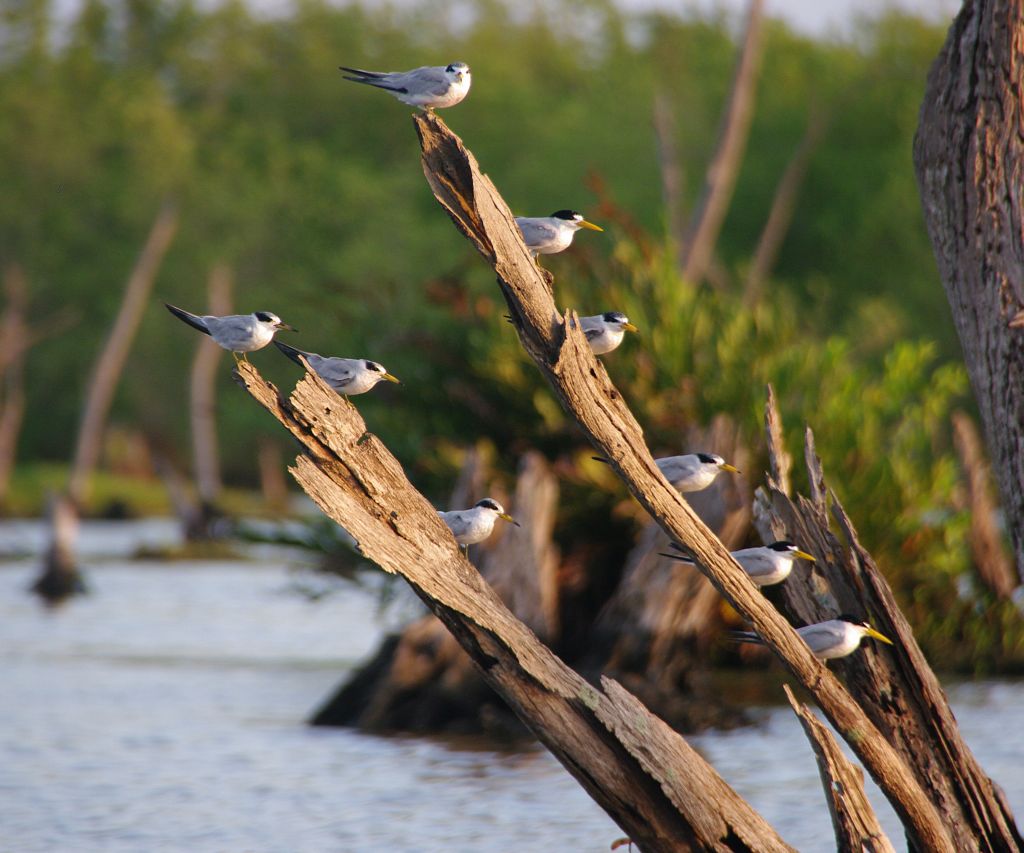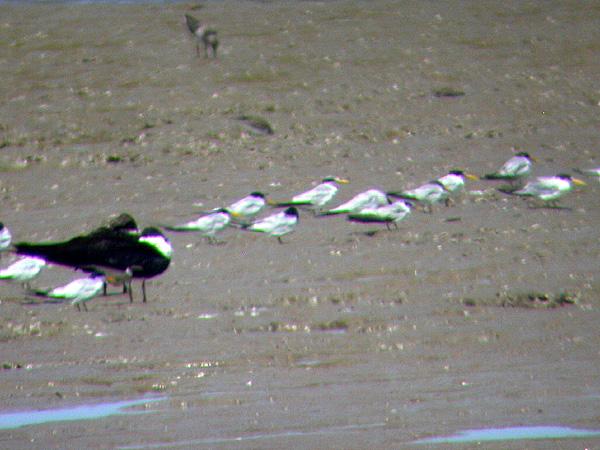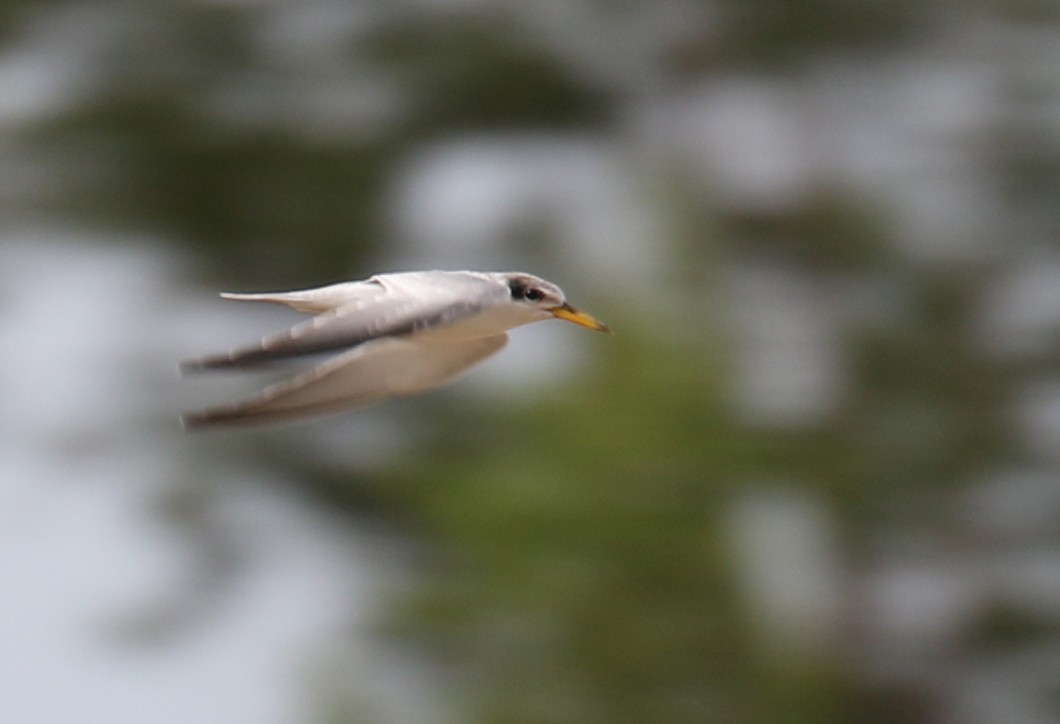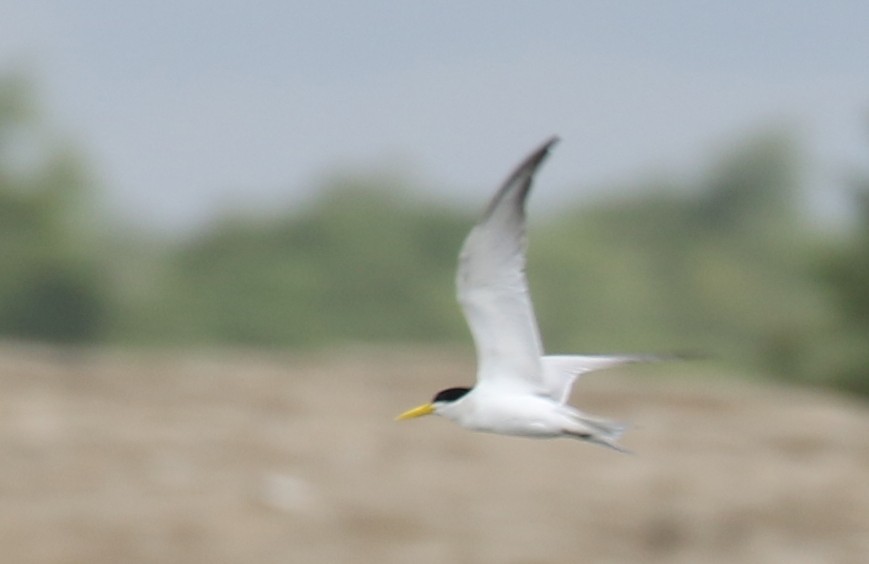 Yellow-billed Tern (Sternula superciliaris)
Yellow-billed Tern (Sternula superciliaris)
 Yellow-billed Tern (Sternula superciliaris)
Yellow-billed Tern (Sternula superciliaris) |
 |
| Pictures (click on them to enlarge) | ||
|---|---|---|
 © Rob en Mieke Strucker Luitwieler |  Coronie © Erik Toorman |  © Klaas de Jong |
 © Klaas de Jong |
| Photo of a group of Yellow-billed terns made by Erik Toorman in Coronie in October 2010. In the foreground also two very black Skimmers, clearly much larger. Terns are difficult to identify: The Large-billed Tern also has a (larger) yellow bill, but it also has a lot of black on its wings. And the Yellow-billed tern also resembles the Least Tern (in breeding outfit), but this last one has a bill that is more orange, and a black stripe on the forewing. But I wait for a better picture, this tern is common along the coast and can also be found more inland, along major rivers. Dominiek Plouvier made a video with some Yellow-billed Terns and Turnstones and a Dowitcher. |
| Video (click the link or the 'play'-button to see) | ||
|---|---|---|
| Video recording of a Yellow-billed Tern © ; |
|
|
||||||||||||||||||||||||||||||||||||||||||||
| Observations through the year | Observations of breeding through the year |
|---|---|
| The 180 reported observations of this bird in Suriname, mainly for the last 50 years up to 2018, have been grouped by month. More birds on one day are counted as one observation. Of course, if the graph should depict the total number of birds seen, the differences between the months could be much more pronounced. | The reported breeding observations of this bird in Suriname. Most observations are about nest with eggs, some about fledglings, or feeding at a nest or the building of a nest. Of the about 5000 nests and eggs found for all species together, about 1/3 comes from the egg collection of Penard between 1896 and 1905. For some reason most collecting then was done in the first half of each year, so the shown distribution does not necessarily reflect the actual breeding preferences. The main dry season in Suriname is reckoned to be from half August to the end of November, the main wet season from half April to half August, but the the timing of begin and end does vary from year to year. Around March a second dry season often occurs. |